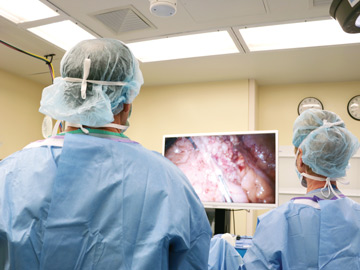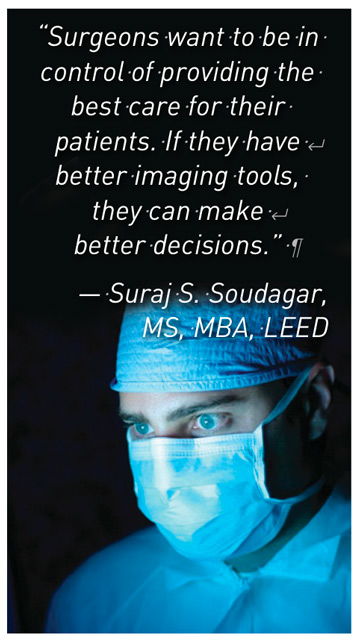Resolution is one of the key factors in the identification of fine details in laparoscopic images, says Ceana Nezhat, MD, FACS, FACOG, fellowship director at Nezhat Medical Center and director of minimally invasive surgery and robotics at
Northside Hospital in Atlanta. He points out that ultra-high-def 4K imaging offers four times the resolution of standard HD systems.
The clearer pictures of 4K provide several advantages that improve the surgeon's precision as he moves instruments in and around critical anatomy, including the ability to magnify an image on the screen 10 to 30 times with virtually no pixilation
and enhanced color profiles with more detail. Smaller 4K video scopes are available with an autofocus feature that keeps images sharp as surgeons move the camera in the surgical field through 3mm incisions.
Is it possible to get this type of picture quality on the video monitor you're currently using? Or do you need a larger monitor in order to properly display it? Full high-def has a 1920-by-1080 pixel matrix, compared with the 3840-by-2160
pixel ?matrix of 4K. Mr. Soudagar says 4K displays are therefore optimized on larger monitors. "The benefits are the clarity, sharpness and wider color gamut," he explains. "Those benefits are fully realized on monitors that let you see
the entire picture."
By routing 4K images to large monitors, you'll view video with less pixilation, wider and deeper colors, and better depth perception. "When you use 4K to zoom in on a specific anatomy, the image will not lose its sharpness and clarity, unlike
with standard definition, which will appear with more pixilation on bigger screens," says Mr. Soudagar. "Surgeons who operate with the increased clarity of 4K [on large monitors] can make better diagnostic decisions."
Buena Vista Regional Medical Center in Storm Lake, Iowa, recently added 4K imaging to its ORs so the facility's surgeons could operate with more confidence and precision. "The image is so clear that I am able to see down to the capillary level,
which is important for improved dissection of tissue and evaluating the perfusion of the tissue," says Jason Dierking, MD, FACS, a general surgeon at Buena Vista.
He says the technology lets surgeons view surgery in greater anatomical detail, brightens deep surgical cavities and bleeding areas, and enhances reds and yellows, which lets surgeons better visualize fine tissue patterns and see anatomy in
greater contrast.
.svg?sfvrsn=be606e78_3)


.svg?sfvrsn=56b2f850_5)